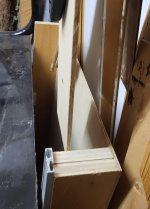onocoffee
Member
Last week, I saw a guy on the internet post about a "crosscut sled" he made using two Incra v27 miter gauges linked with a straight fence made from Baltic Birch 18mm ply. Of course, lots of people on the thread poo-poo'd him but it seems rather logical to me.
We spend a lot of time trying to mount the runners and even more time to square the fence, doesn't this do it all in one swoop?
Interested to know your thoughts.
We spend a lot of time trying to mount the runners and even more time to square the fence, doesn't this do it all in one swoop?
Interested to know your thoughts.

